This cases highlights the long term affects of early trauma to adult front teeth. The work was done for a young person who suffered a fracture to both front teeth in early childhood. Both teeth were restored with white fillings, which failed with disappointing regularity which lead to the decision to place a crown on the left front teeth. Ordinarily this is something we would strive to avoid as we know that the amount of tooth tissue removal required for conventional crown work can have a very damaging impact on the nerve of an already traumatised young tooth. (The second slide shows the tooth once the crown was removed, revealing how much tooth tissue needed to be removed). Unfortunately the crown did not give a level of aesthetics that the patient was happy with and, as is often the case, the tooth subsequently became painful. My involvement in the case came at a stage where the tooth was painful to hot and cold and giving spontaneous bouts of pain all of which point very definitely to an irreversibly inflamed nerve that requires root canal treatment to correct.
The patient was keen to try and improve the aesthetics of the end result which they felt involved making a much shorter crown. In actual fact although the crown was a little too long it was made to look worse than it was by an overly short neighboring tooth (it has succumbed to fracture in the original trauma and the restoration had broken off some time previously). The decision was made to replace the existing crown with an all ceramic one and to build up the adjacent tooth with a direct white filling. The direct white filling was chosen ahead of any further ceramic work as we wanted to do no further drilling to this tooth and direct composite work allowed us to proceed in this manner. The ceramic crown was made by the excellent team at Precedental Laboratories, who consistently provide excellent work.
Radiographic examination of the tooth revealed a shadow in the side of the root which may well indicate root resorption, caused by the initial trauma. At this stage we do not know if this is an ongoing process or one that took place for a while at the time of the trauma and has since remained stable. Further reviews of the tooth over the next 12 months will help to establish if this is a worsening site and further treatment may yet be needed.
The take home message from all of this is try to avoid trauma to young teeth by wearing sports guards for all contact sports but if injuries do occur try to be as “tooth kind” as possible with every step of the treatment.
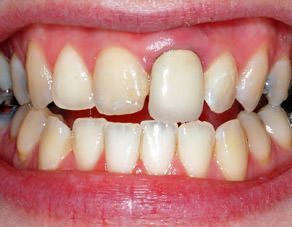
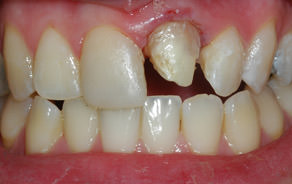
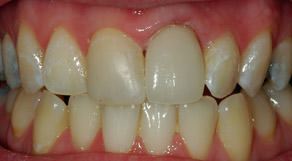
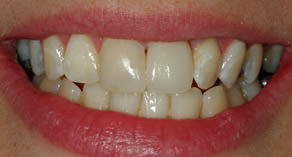
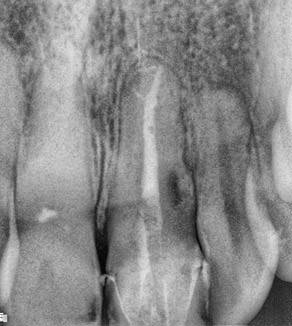
If you are concerned about the appearance of any of your front teeth or are having problems with painful or sensitive teeth then please do not hesitate to contact the surgery on 01580 752202 and we will be happy to help.